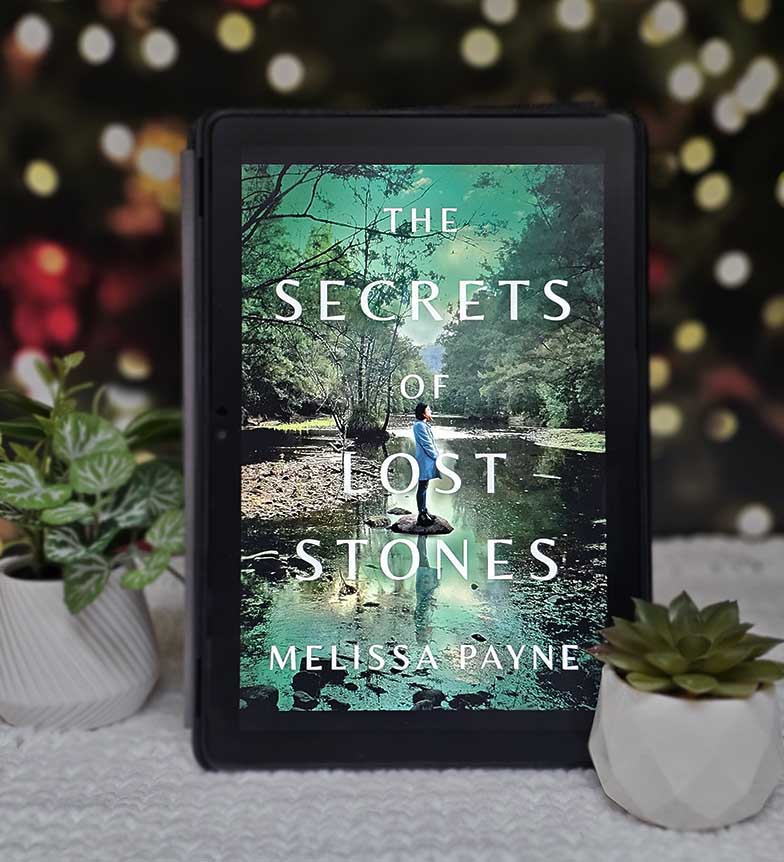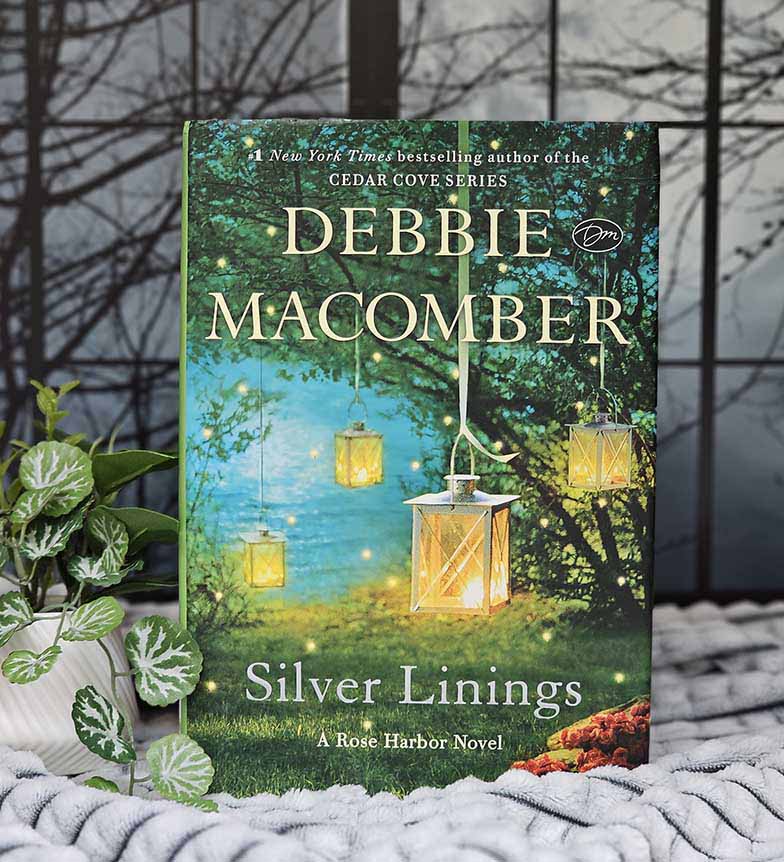
The Secrets of Lost Stones
by Melissa Payne
A touching story about a small Colorado town, a young woman seeking redemption, and the mysterious healing powers of special stones that connect strangers and transform lives. A gentle tale about community, forgiveness, and finding your place.
Spoiler Warning
This review may contain spoilers. Read at your own discretion if you haven't finished the book yet.
Small-Town Magic and Big-Hearted Healing
Melissa Payne's The Secrets of Lost Stones is a gentle, warm-hearted novel that sits comfortably in the space between contemporary fiction and magical realism. It's the kind of book that doesn't demand much from you but offers quiet rewards for those willing to settle into its slower rhythm and embrace its earnest emotionality. This isn't a book trying to challenge or provoke; it's a book trying to comfort and heal, and largely, it succeeds.
Set in the fictional small town of Lost Stones, Colorado, the novel follows Jess Winters, a young woman returning to face the consequences of a drunk driving accident that killed her best friend years earlier. She's served her time, but now she must navigate the harder prison of a community that remembers, judges, and struggles to forgive. Enter Star Harmon, an eccentric older woman who claims that special stones can heal emotional wounds, and a cast of small-town characters all carrying their own hidden hurts.
The Comfort of Gentle Fiction
What makes this book appealing is also what limits it: it's profoundly gentle and safe. If you're looking for edge, darkness, or challenging complexity, this isn't it. But if you want a story that believes in human goodness, that trusts in the possibility of redemption, that sees small-town community as a force for healing rather than suffocation, Payne delivers that with genuine warmth.
The magical realism elements—the stones that seem to have healing properties—are handled with intentional ambiguity. Are they truly magical, or are they just beautiful objects that people invest with meaning because they need something to believe in? Payne never commits to either interpretation, and this openness is actually one of the book's strengths. The stones work whether you believe in magic or believe in the power of symbols and ritual.
The writing style matches the content: straightforward, unpretentious, focused on emotional beats rather than lyrical language. Payne isn't trying to dazzle with prose; she's trying to create characters you care about and situations that resonate emotionally. The sentences are clean and functional, occasionally rising to genuine poignancy but more often settling for sincere expression of feeling.
Characters You Root For
The character work is where the book excels. Jess is a well-drawn protagonist—flawed enough to be interesting, sympathetic enough to root for. Her guilt over the accident feels real, and her struggle to rebuild a life while carrying that weight is handled with sensitivity. She's not looking for easy forgiveness; she's looking for a way to live with what she's done and maybe, eventually, forgive herself.
Star Harmon is the kind of character that could easily tip into quirky cliché—the wise, eccentric older woman with mystical knowledge and healing powers. But Payne grounds her with enough backstory and genuine loss that she feels like a real person rather than a stock character. Her belief in the stones comes from personal tragedy, and her desire to help others heal is rooted in her own unhealed wounds.
The supporting cast is populated with familiar small-town types: the judgmental neighbors, the understanding few, the other outsiders and misfits looking for acceptance. While none of these characters break new ground, they're rendered with enough specificity to feel like individuals rather than archetypes. Each has their own stone, their own healing journey, their own moment of revelation.
Small-Town Dynamics
The novel's treatment of small-town life is nuanced enough to feel honest. Lost Stones isn't presented as either an idyllic haven or a oppressive hellscape. It's a complicated place where people know your business and judge you for it, but also where community can sustain you if you let it. Payne captures the double-edged nature of small-town life: the lack of anonymity can be crushing, but it also means people notice when you need help.
The social dynamics ring true: the way gossip spreads, the way old wounds fester in close quarters, the way redemption requires not one grand gesture but consistent small choices over time. Jess can't just apologize and move on; she has to prove herself day by day, interaction by interaction, slowly earning trust and forgiveness from a community that has every right to withhold both.
This is also a story about how communities heal collectively. The accident didn't just hurt Jess and the victim's family; it rippled outward, affecting everyone in the town's ecosystem. Healing, Payne suggests, isn't just individual—it's communal, requiring the participation of everyone involved.
Magical Realism as Metaphor
The stones function beautifully as metaphorical objects. Each person receives a stone that somehow relates to their specific wound or need—sometimes obviously, sometimes mysteriously. The ritual of receiving the stone, carrying it, meditating on it, creates a framework for processing pain and moving toward healing.
This is magical thinking in the psychological sense: the stones don't have power themselves, but the act of believing they might, of having a physical object to focus intention and hope on, creates real change. It's placebo effect elevated to spiritual practice, and Payne never condescends to this impulse. She treats the human need for symbols and ritual with respect.
The ambiguity about whether the stones are "really" magical is maintained throughout, and this feels right. Defining the magic too specifically would diminish it. The stones work because people believe they might work, because they create space for hope, because they give permission to feel and heal. That's magic enough.
Pacing and Structure
The pacing is leisurely, which will suit some readers and frustrate others. This is a character-driven novel more interested in emotional development than plot propulsion. Things happen—Jess reconnects with the community, relationships develop, conflicts arise and resolve—but the book's rhythm is contemplative rather than urgent.
The structure follows a fairly predictable arc: arrival, resistance, gradual acceptance, setbacks, ultimate healing and integration. There are no major surprises in the plotting, no significant twists. The pleasure comes from watching expected developments unfold with care and emotional authenticity, not from being shocked by unexpected turns.
For readers who appreciate gentle fiction that unfolds at its own pace, this will feel right. For those who need stronger plot momentum, it may feel meandering. The book knows what it is and doesn't apologize for its gentleness or its focus on emotional healing over external drama.
The 3.9 Rating: Solid but Not Exceptional
The 3.9 rating reflects a book that does what it sets out to do quite well while acknowledging it won't be for everyone. This is accomplished, heartfelt fiction that stays safely within familiar territory. It's the literary equivalent of comfort food—satisfying when that's what you need, but not pushing any boundaries or offering much that's genuinely new.
The magical realism elements keep it from being pure contemporary fiction, but they're employed gently enough not to challenge readers uncomfortable with genre elements. The emotional beats are earnest and mostly land well, though occasionally they tip toward the sentimental. The resolution is hopeful without being unrealistically tidy—people don't suddenly forget their grief, but they do find ways to carry it more lightly.
Where the book could be stronger is in taking more risks. The comfort is genuine, but comfort can also be limiting. A bit more edge, some deeper exploration of the moral complexities of forgiveness and redemption, some willingness to let things stay unresolved might have elevated this from very good to exceptional.
Themes Worth Considering
Payne engages thoughtfully with questions about forgiveness: Can you forgive yourself for causing irreparable harm? Does the victim's family owe the perpetrator forgiveness? How does a community balance accountability with compassion? These aren't easy questions, and while the book offers a hopeful take, it doesn't pretend the answers are simple.
The novel also explores how trauma shapes identity. Jess has been defined by the worst thing she ever did for years. Learning to be a whole person beyond that single mistake—accepting responsibility without letting it consume her—is her central challenge. This feels true to how trauma works: it becomes the lens through which everything is filtered until you find ways to integrate it without letting it dominate.
The community healing aspect is particularly well-done. Payne shows how individuals' private pain intersects and how healing can be both solitary and collective. The stones create connections between people who might otherwise remain isolated in their suffering.
Who This Is For
The Secrets of Lost Stones is perfect for readers who love gentle, character-driven fiction with a touch of magic. If you enjoyed Sarah Addison Allen's garden magic books, Eowyn Ivey's The Snow Child, or similar magical realism that leans warm and hopeful, this will appeal to you.
It's also a good choice for readers dealing with their own losses or seeking stories about forgiveness and second chances. The book's gentle handling of heavy themes makes it accessible even when you're emotionally vulnerable. It's healing fiction in the best sense—not because it offers easy answers but because it affirms that healing is possible.
However, if you prefer edgier fiction, complex plotting, or prose with more stylistic ambition, this may feel too safe and straightforward. It's a book that delivers exactly what it promises—no more, no less.
Final Thoughts
Melissa Payne has written a kind, generous book that believes in human goodness and the possibility of redemption. The Secrets of Lost Stones won't change your life or challenge your worldview, but it might offer comfort when that's what you need. It's a reminder that small communities can heal as well as harm, that forgiveness is a process rather than a moment, and that sometimes we need symbols and rituals to help us through the hardest transitions.
The 3.9 rating reflects appreciation for what the book does well—genuine emotional resonance, appealing characters, thoughtful engagement with forgiveness—while acknowledging it operates safely within established conventions. It's very good at being what it is, even if what it is won't appeal to every reader.
If you're looking for a book to curl up with on a quiet afternoon, something that will make you feel more hopeful about human nature and community, something gentle but genuine in its emotions, this delivers beautifully. It's not trying to be the most important book you'll read this year, but it might be one of the most comforting, and sometimes that's exactly what you need.
Recommended for readers who value heart over edge, healing over challenge, and stories that remind us that second chances are real and worth fighting for.
My Notes & Takeaways
Themes & Memorable Elements
On Healing and Forgiveness:
"Some wounds are so deep that they change who you are. But healing isn't about going back to who you were—it's about discovering who you can still become."
"The stones don't heal you. They remind you that healing is possible."
On Community and Connection:
"A small town can be suffocating or sustaining, depending on whether the people there choose to trap you or hold you."
"Everyone carries secrets. The question is whether those secrets isolate you or whether sharing them creates bridges."
On Second Chances:
"Redemption isn't a single moment. It's a series of small choices to do better, be better, try again."
"The past doesn't define you unless you let it. Every day is a chance to write a different story."
On Magical Realism:
- The stones' powers are never fully explained—are they truly magical or just symbols of hope?
- The ambiguity allows readers to interpret through whatever lens they're comfortable with
- Magic as metaphor for the transformative power of human connection and belief
Character Arcs:
- Jess: From running away to running toward, learning to face consequences and rebuild
- Star: The wise woman whose own losses inform her ability to help others heal
- The Town: Lost Stones itself as a character, representing both judgment and acceptance
- Secondary characters: Each with their own wounds and their own path to healing
You Might Also Like

Silver Linings
by Debbie Macomber
When two wounded souls cross paths in a small Washington town, they discover that sometimes the hardest battles are fought in the heart. A heartwarming story about finding hope and love after loss.

Your Perfect Year
by Charlotte Lucas
When a mysterious diary falls into his hands on New Year's Day, a rigid businessman embarks on a life-changing journey of tasks and self-discovery that connects him with a free-spirited woman and changes both their lives forever.

The Cast
by Danielle Steel
Follow the lives of a television ensemble cast over nine years as they navigate fame, relationships, and personal challenges while creating a groundbreaking show.